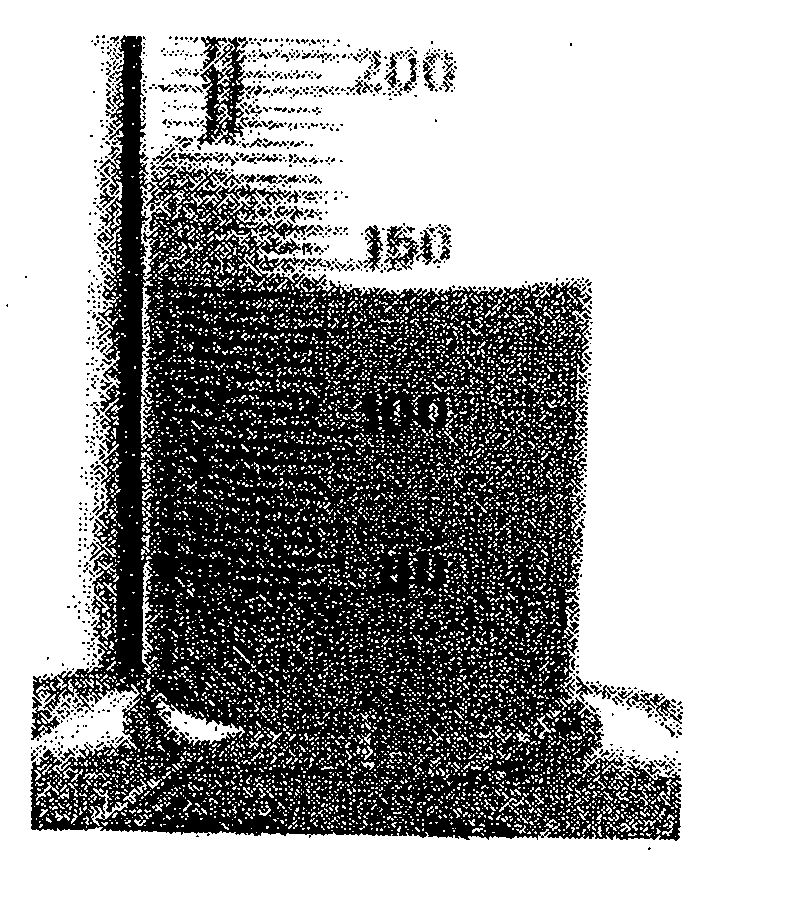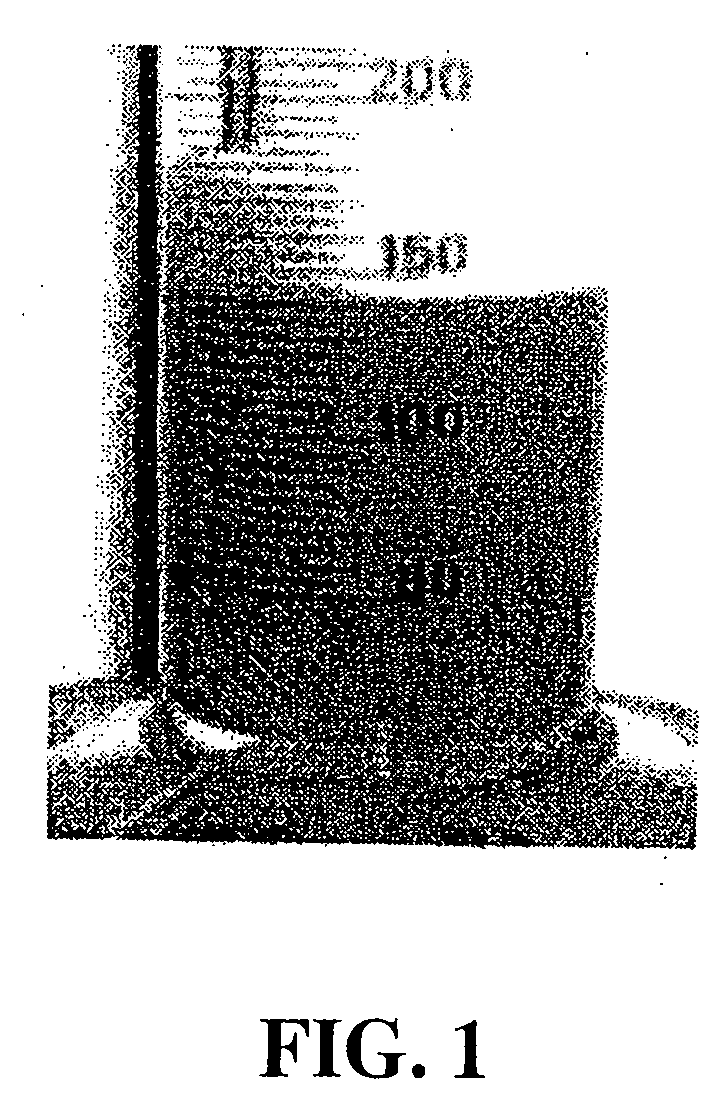Self-foaming liquid creamers and processes
a liquid creamer and self-foaming technology, applied in the field of self-foaming liquid creamers, can solve the problems of insufficient acidity, time-consuming and labor-intensive preparation of such drinks, and not allow the consumer the flexibility of tailoring the beverage, so as to maintain the overall structure and integrity of the creamer, and improve the flavor of the beverage. , the effect of whitening
- Summary
- Abstract
- Description
- Claims
- Application Information
AI Technical Summary
Benefits of technology
Problems solved by technology
Method used
Image
Examples
example 1
Preparation of Hot Cappuccino Beverage According to the Invention
[0054] Hot cappuccino beverages were prepared by adding to about 120 mL of dark coffee, prepared from dehydrated Nescafe Gold instant coffee with the dairy foam being obtained by mixing 20 mL of liquid 1A and 20 mL of liquid 2. The compositions of the liquids are provided below. The foam formed by mixing liquids 1A and 2 was sweet. If liquid 1B was used instead of 1A, an unsweetened dairy foam was obtained. By mixing 20 mL of each liquid 1 and 2, about 100 to 130 mL of white and fine dairy foam of the invention were surprisingly and unexpectedly obtained. This foam had a density value of about 0.3-0.4 and had good whitening properties.
Liquid 1ComponentsABLiquid 2AWater688877Skim milk powder——20Maltodextrin DE 211010—Sucrose20——Potassium bicarbonate——3Tartaric acid0.660.66—Monocalcium phosphate monohydrate1.331.33—
example 2
Preparation of Hot Cappuccino Beverage According to the Invention
[0055] Hot cappuccino beverages were prepared by adding to about 120 mL of dark coffee, prepared from dehydrated Nescafe Gold instant coffee with the dairy foam being obtained by mixing 20 mL of liquid 1C and 20 mL of liquid 2B. The compositions of the liquids are provided below. In this example, the acid used was ascorbic acid. By mixing 20 mL of each liquid 1C and 2B, about 100 to 130 mL of white, sweet and fine dairy foam of the invention were surprisingly and unexpectedly obtained. This foam had a density value of about 0.3-0.4 and had good whitening properties.
Liquid 1Liquid 2ComponentsCBCWater5777Whole milk87Skim milk powder—2010Maltodextrin DE 2120—Sucrose20—Potassium bicarbonate—33Ascorbic acid3—
example 3
Preparation of Hot Cappuccino Beverage According to the Invention
[0056] Hot cappuccino beverages were prepared by adding to about 120 mL of dark coffee, prepared from dehydrated Nescafe Gold instant coffee with the dairy foam being obtained by mixing 20 mL of liquid 1C and 20 mL of liquid 2C. The compositions of the liquids are provided above. In this example, the dairy liquid used contain whole milk. By mixing 20 mL of each liquid 1C and 2C, about 100 to 130 mL of white, sweet and fine dairy foam of the invention were surprisingly and unexpectedly obtained. This foam had a density value of about 0.3-0.4 and had good whitening properties.
PUM
| Property | Measurement | Unit |
|---|---|---|
| melting point | aaaaa | aaaaa |
| density | aaaaa | aaaaa |
| density | aaaaa | aaaaa |
Abstract
Description
Claims
Application Information
 Login to View More
Login to View More - R&D
- Intellectual Property
- Life Sciences
- Materials
- Tech Scout
- Unparalleled Data Quality
- Higher Quality Content
- 60% Fewer Hallucinations
Browse by: Latest US Patents, China's latest patents, Technical Efficacy Thesaurus, Application Domain, Technology Topic, Popular Technical Reports.
© 2025 PatSnap. All rights reserved.Legal|Privacy policy|Modern Slavery Act Transparency Statement|Sitemap|About US| Contact US: help@patsnap.com


